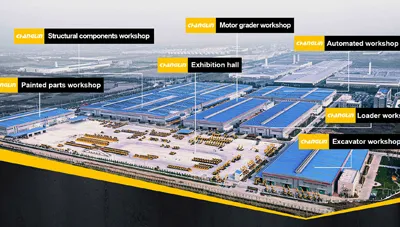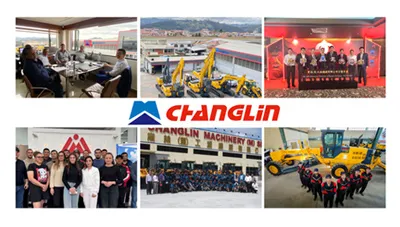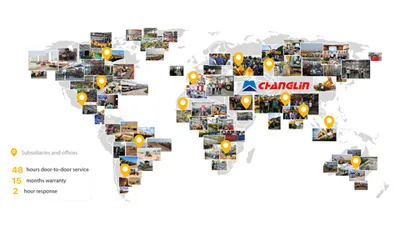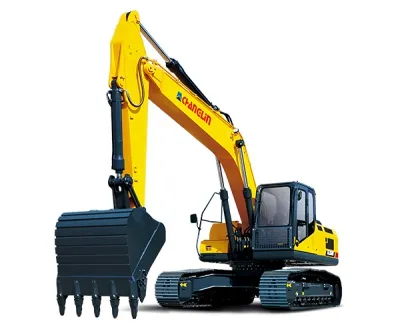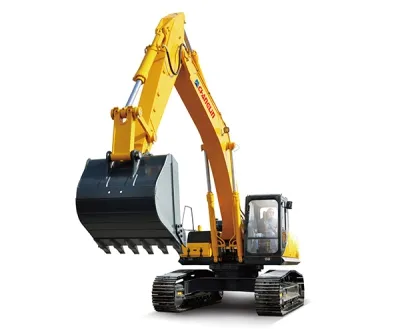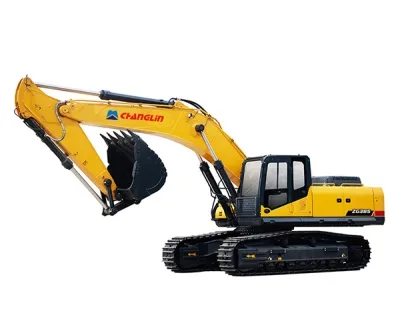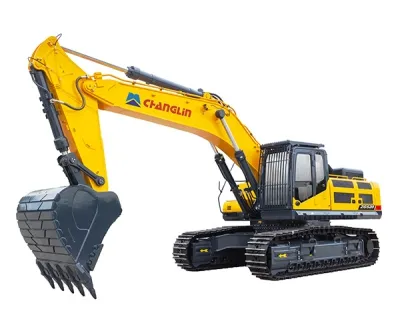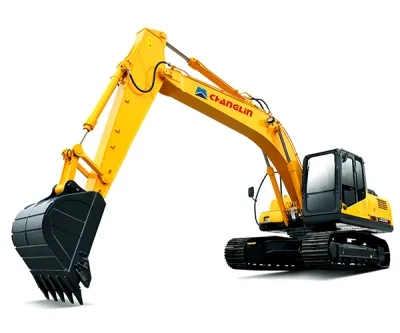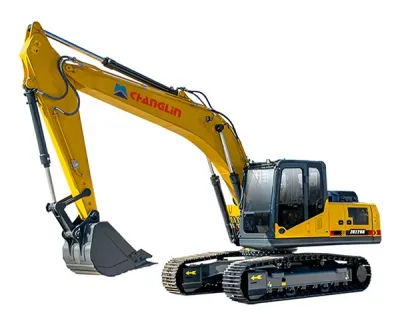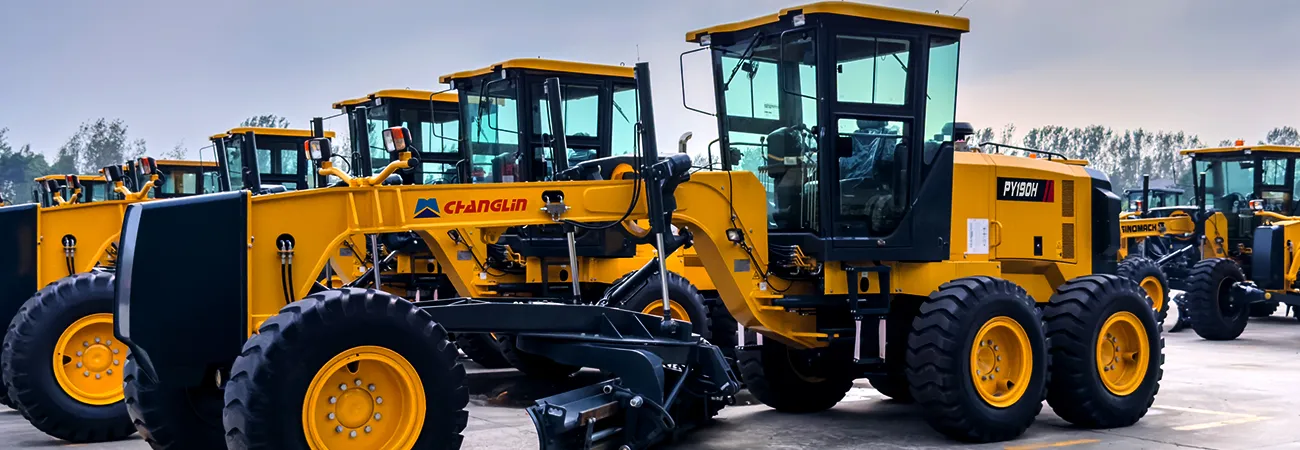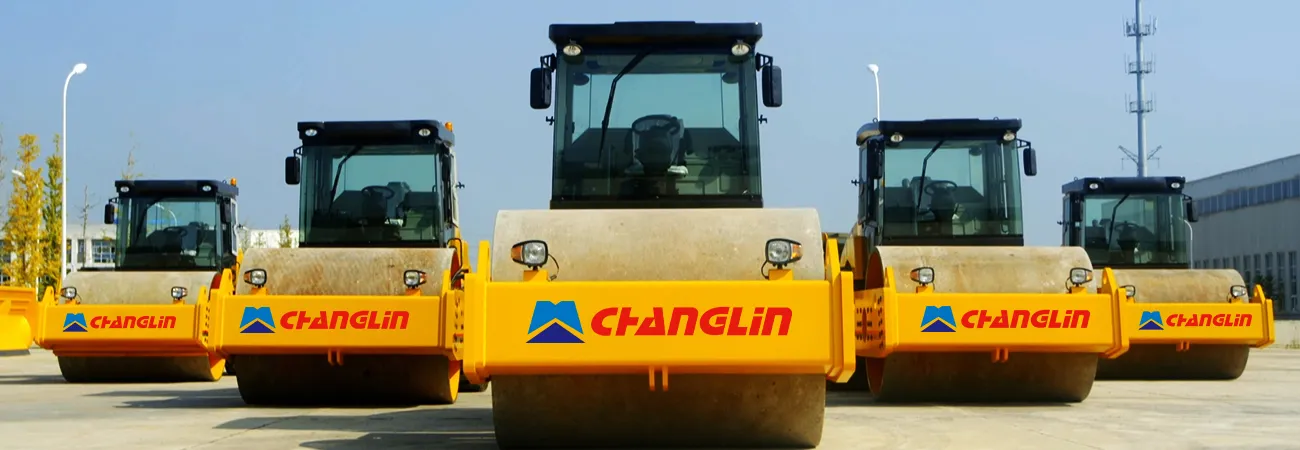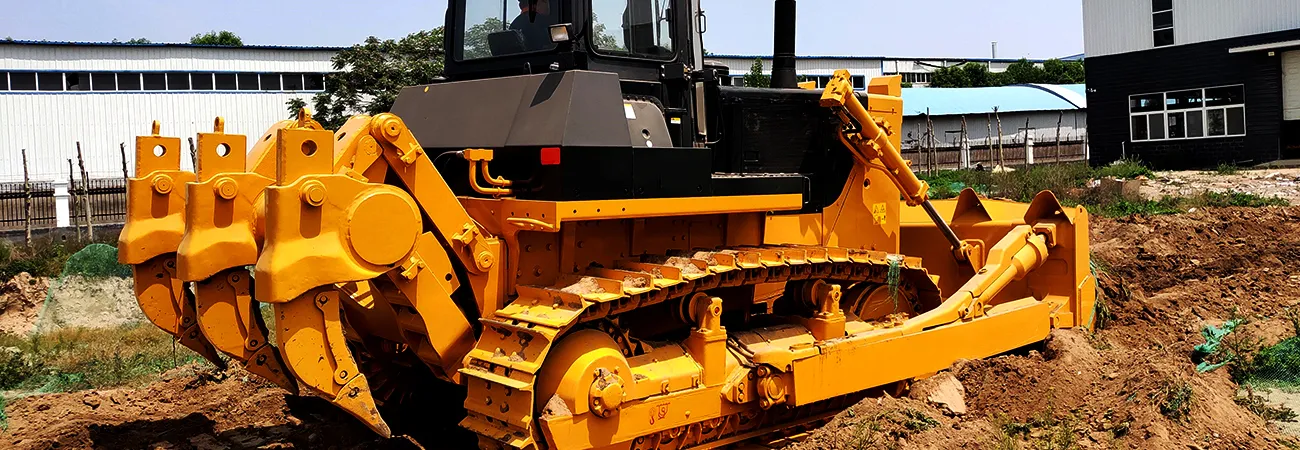- In addition to excavation tasks, this excavator can be fitted with a hydraulic breaker for demolishing hard rock and concrete, making it ideal for mining operations, road demolition, and construction site clearance.
- When paired with an auger drill, it becomes suitable for boring operations such as geotechnical surveys and foundation piling.
- Fitted with a grapple attachment, it can handle wood logs, construction debris, and other bulk materials, making it useful in timber yards, waste management facilities, and building sites.
- With a dredging bucket, it can be used for cleaning silt and debris from riverbeds, drainage systems, and other submerged work environments.
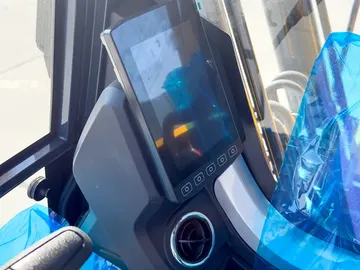
Equipped with an 8-inch high-resolution, anti-glare color display, the intelligent monitoring system provides real-time alerts, maintenance reminders, and self-diagnostic functions to ensure safe and efficient operation.
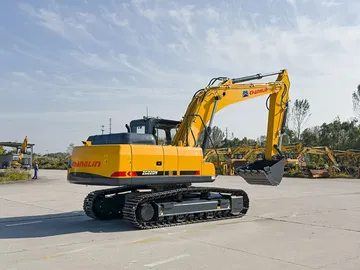
With an operating weight of 21300 kg, this crawler excavator can be transported using a light-duty truck or trailer, eliminating the need for special permits or high transportation costs typically required for heavier equipment.

The integrated flow control valve supports quick coupling with a variety of attachments, such as breakers, augers, grapples, and dredging buckets, making it suitable for tasks like pipeline installation, landscaping, and light demolition in urban or municipal projects.
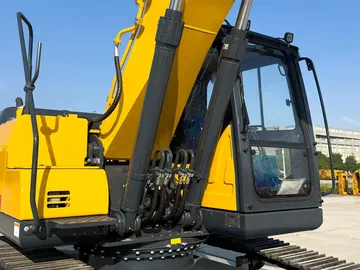
Key joints are reinforced with self-lubricating, high-density copper bushings formulated for low friction and extended wear resistance, reducing maintenance demands in harsh working conditions.

Powered by an eco-friendly Cummins engine delivering up to 112 kW, the excavator meets Euro II emission standards and features a modular structure with fewer components, helping to reduce failure rates and simplify servicing.
Dimensions
- Operating weight 21300kg
- Rated bucket capacity 1.1m³
- Overall length 9660mm
- Overall width (standard track shoe) 2540mm
- Overall height 3030mm
- Turntable width 2700mm
- Cabin height 2958mm
- Ground clearance of counterweight 1025mm
- Engine cover height 2338mm
- Min. ground clearance 470mm
- Tail length 2800mm
- Turning radius of turnable 2800mm
- Wheel base of track shoe 3370mm
- Undercarriage length 4160mm
- Undercarriage width 2800mm
- Track shoe gauge 2200mm
- Standard track shoe width 600mm
Performance
- Max. traction 204kN
- Travelling speed (H/L) 5.8/3.3km/hr
- Swing speed 13.9rpm
- Gradeability 35 (70%)
- Ground pressure 0.47kgf/cm²
Working Range
- Max. digging radius 9953mm
- Max. digging radius at ground level 9794mm
- Max. digging depth 6690mm
- Max. digging depth at ground level 6505mm
- Max. vertical digging depth 6104mm
- Max. digging height 9642mm
- Max. dumping height 6813mm
- Min. front swing radius 3560mm
- Bucket digging force 137kN
- Stick digging force 102kN
Engine
- Model Cummins
- Type 6-cylinder in-line, four-stroke turbocharger
- Emission Tier Ⅱ
- Displacement 5.883L
- Rated power 112kW (150PS)@1950rpm
- Max. torque 614N.m@1500rpm
SINOMACH has developed a global footprint, with marketing and service systems covering over 100 countries and regions.
Subsidiaries in West Africa, India, and South Africa, a joint venture in Malaysia, with offices in Mexico, Argentina, and the Philippines.
Supplied large-scale turnkey equipment packages including excavators, loaders, bulldozers, rollers, and graders for major infrastructure projects in Africa, mining operations in South America and the CIS, highways in West Africa, and engineering projects across Central Asia.


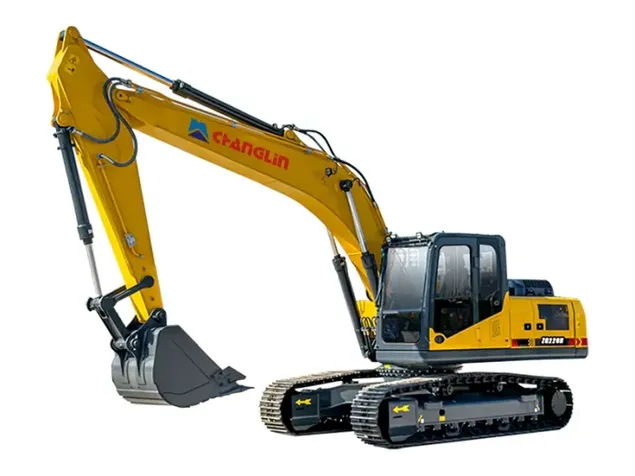
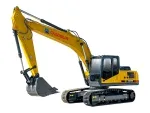
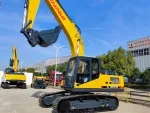
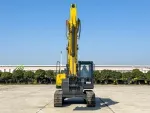
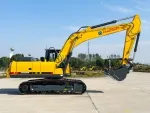
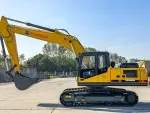
 Operating weight 21300 kg
Operating weight 21300 kg  Rated bucket capacity 1.1 m³
Rated bucket capacity 1.1 m³  Overall length 9660 mm
Overall length 9660 mm

